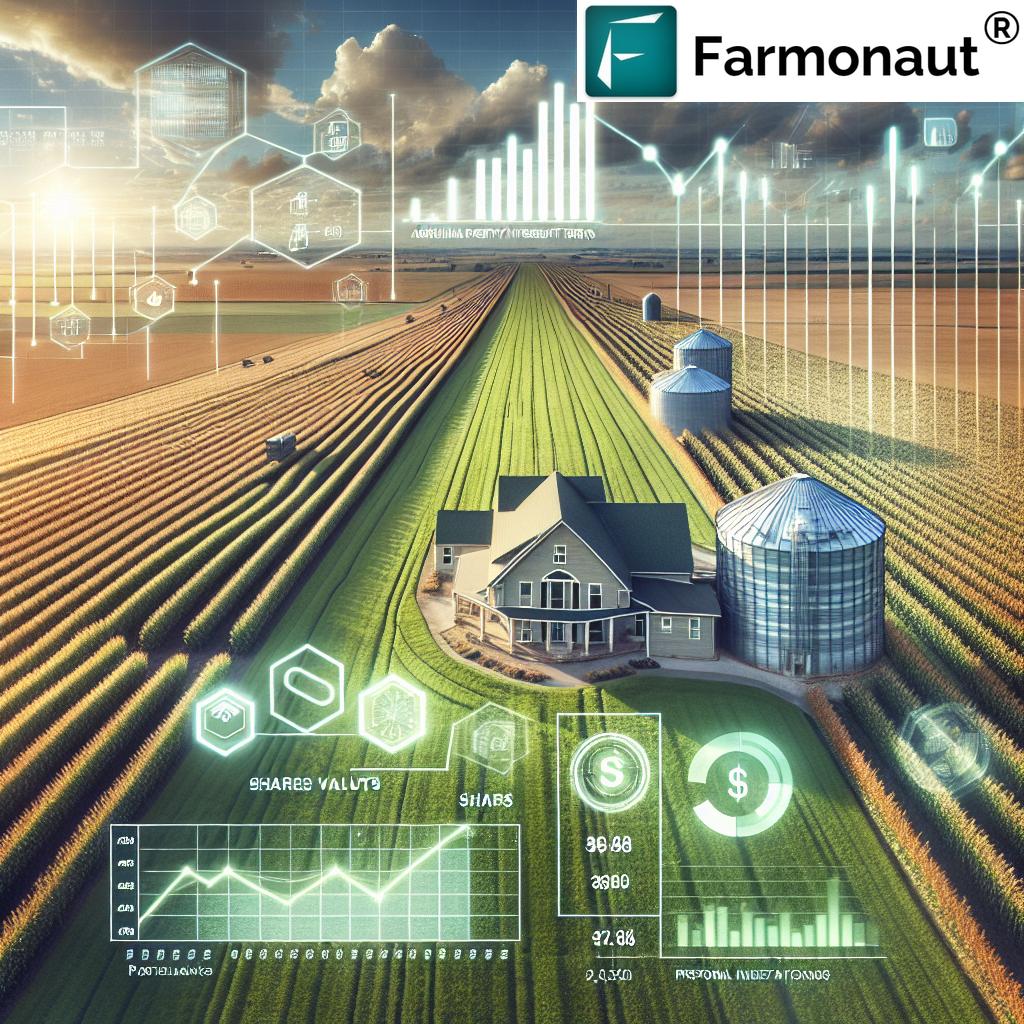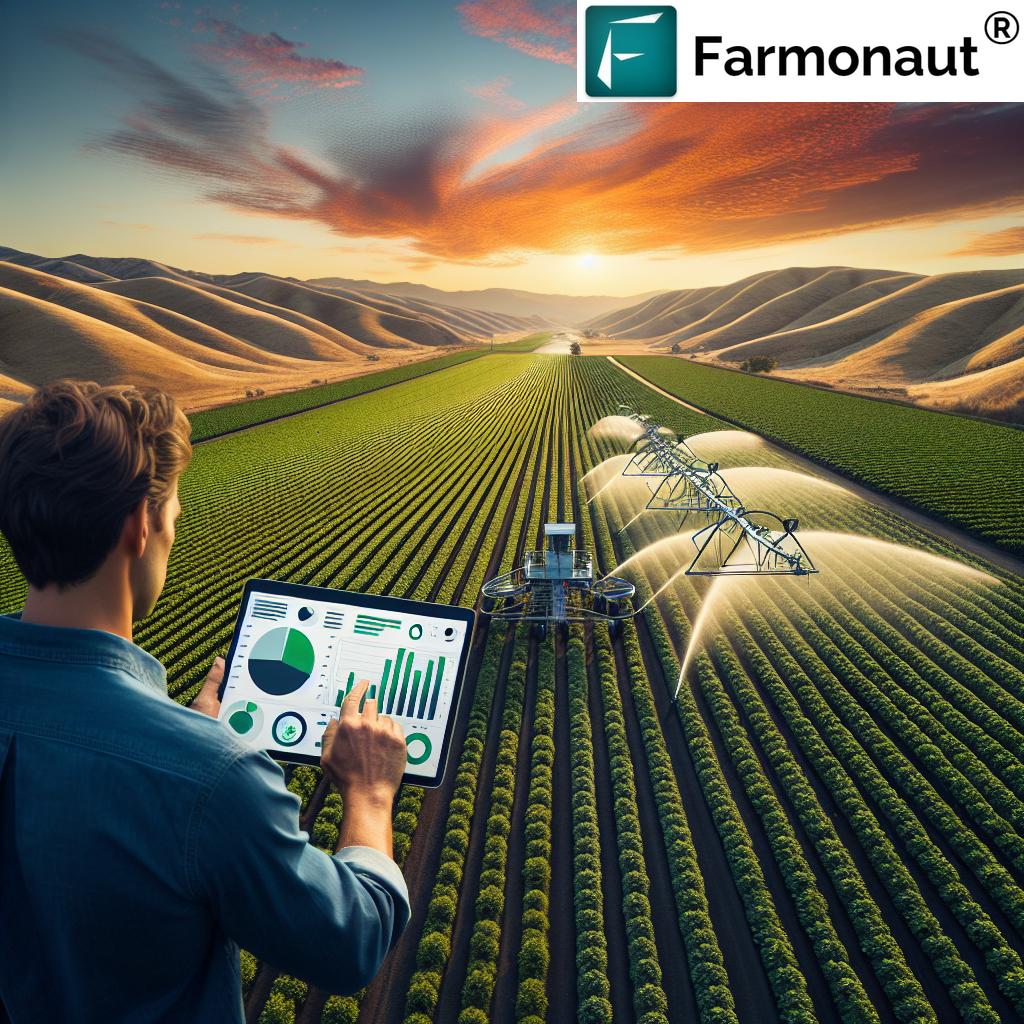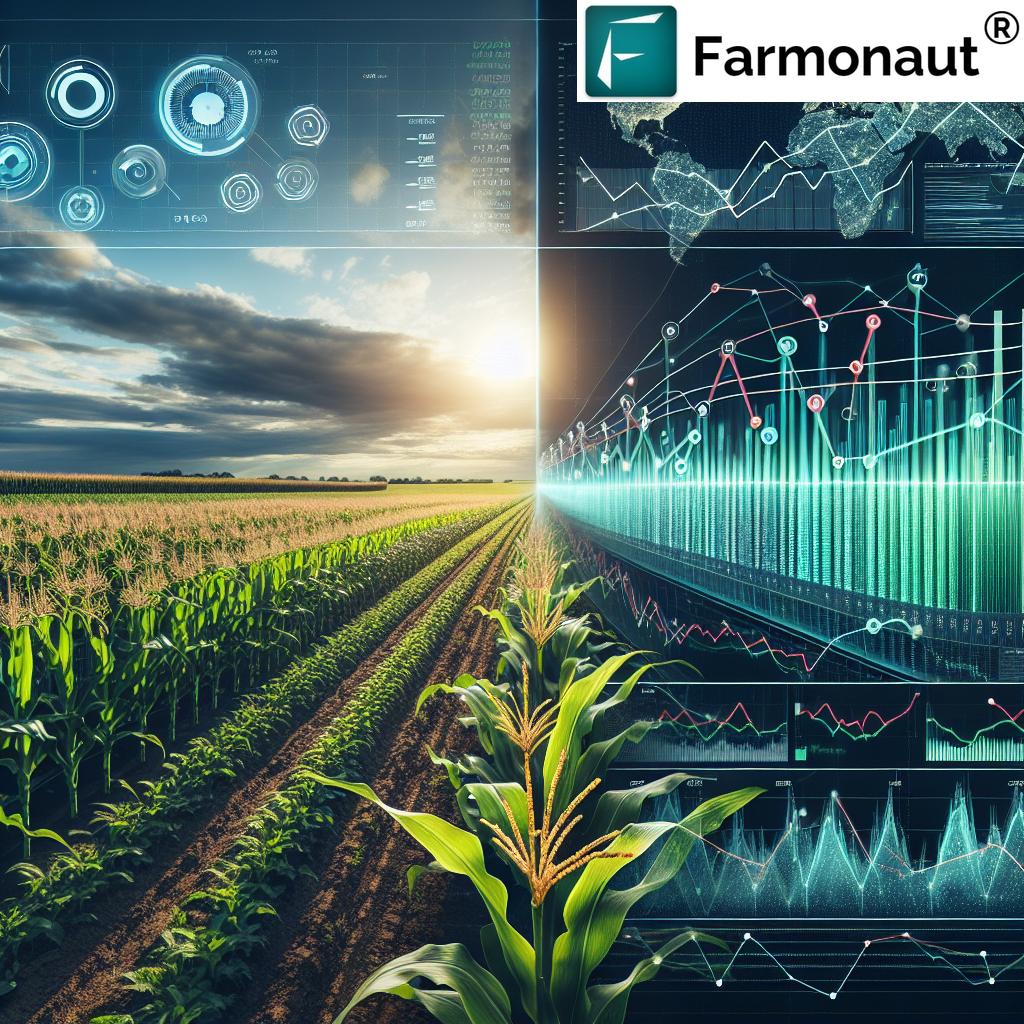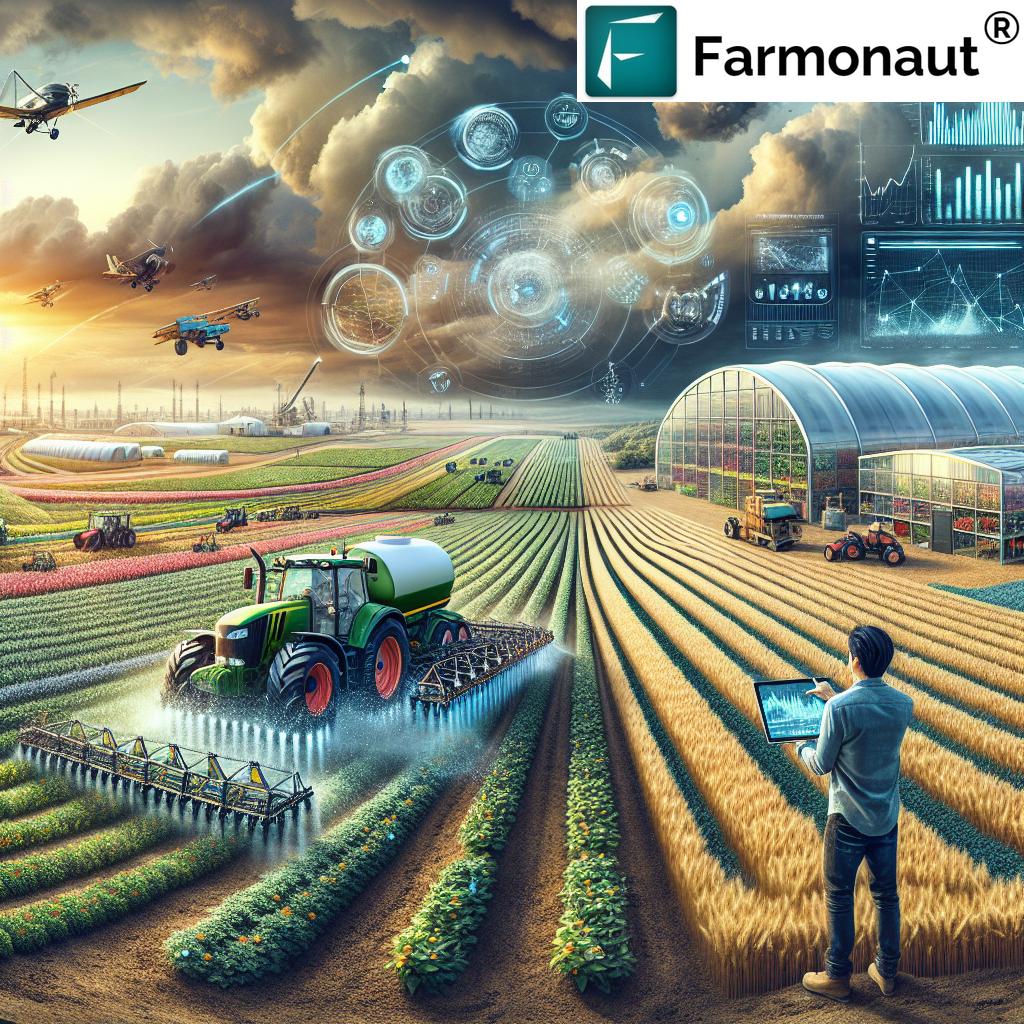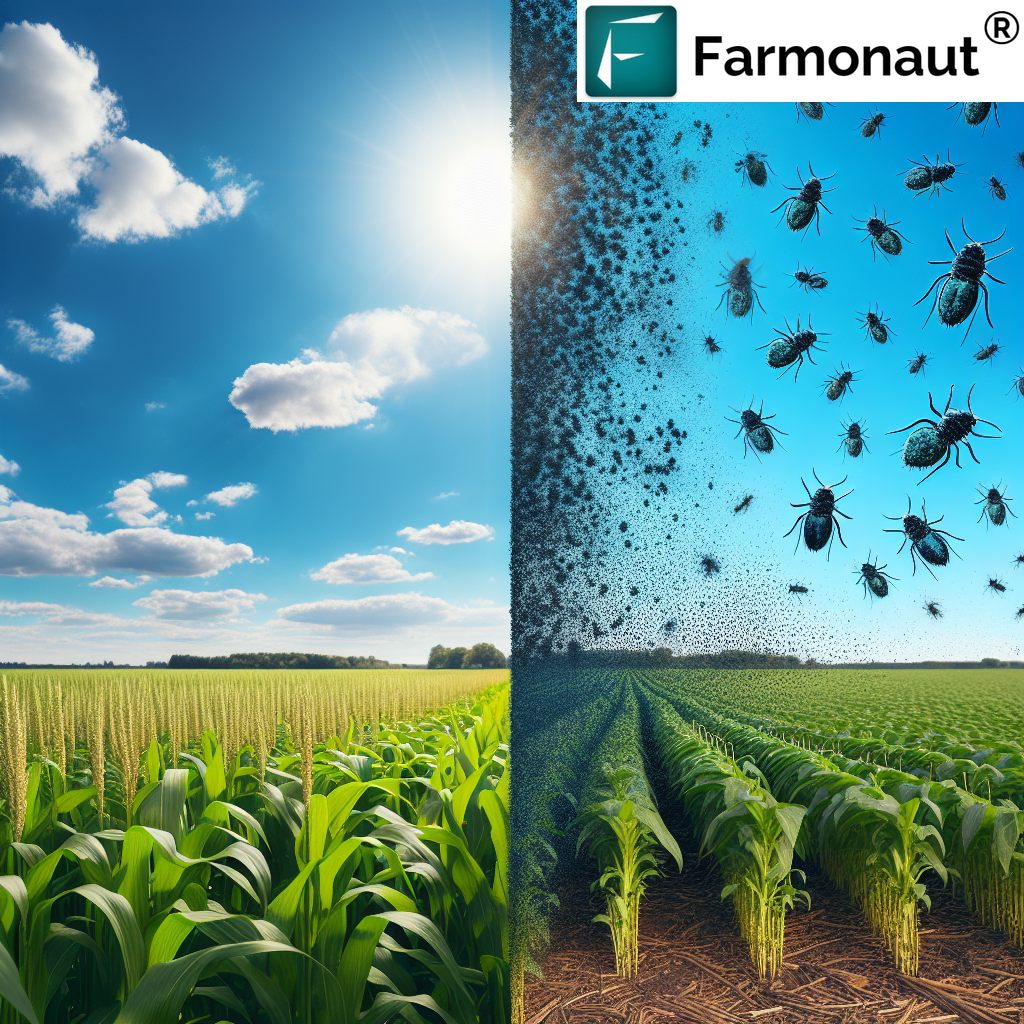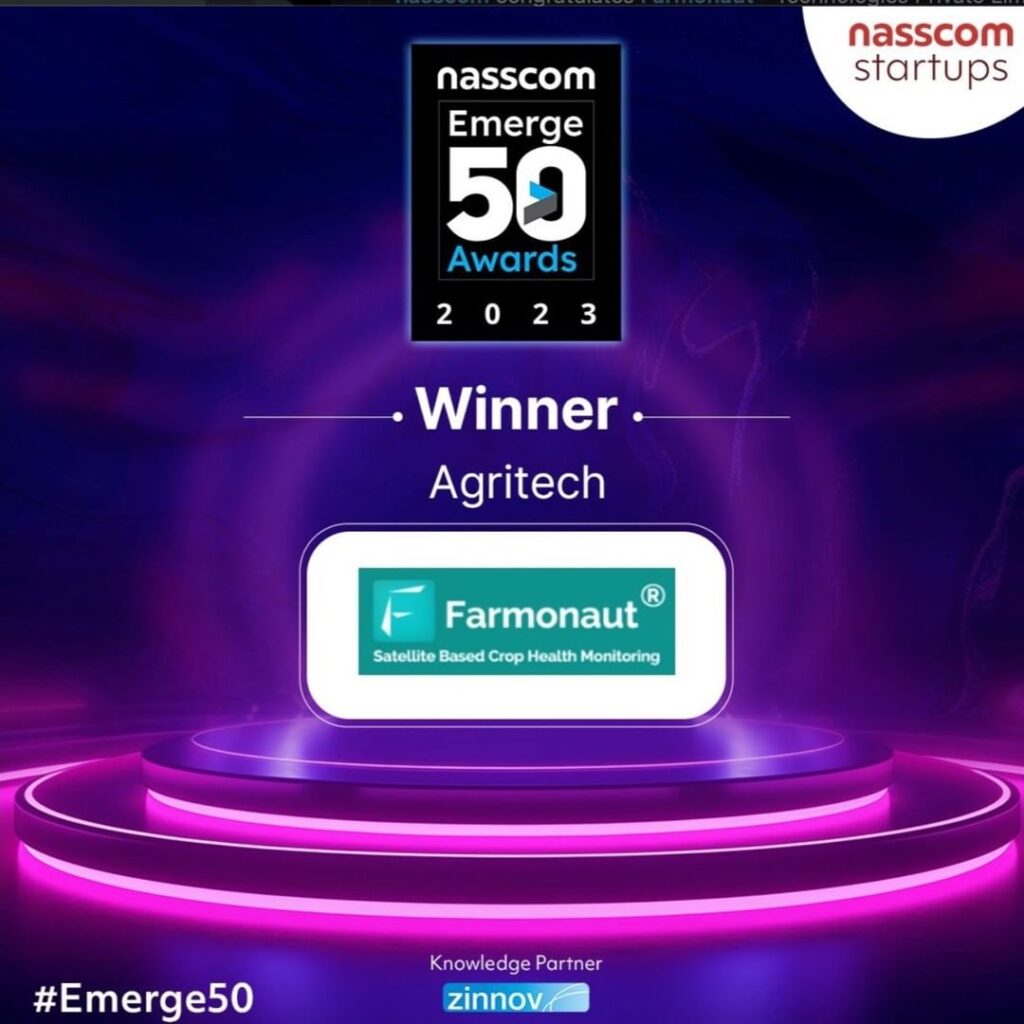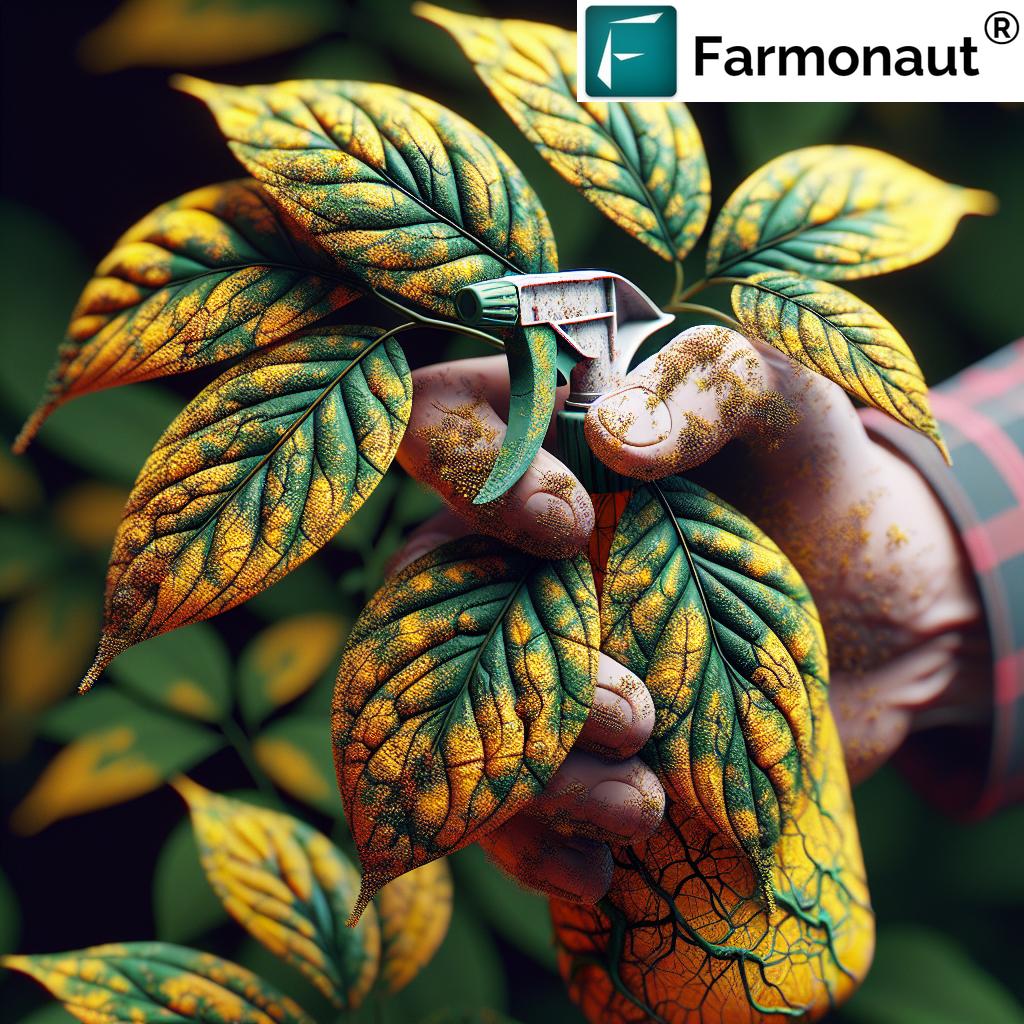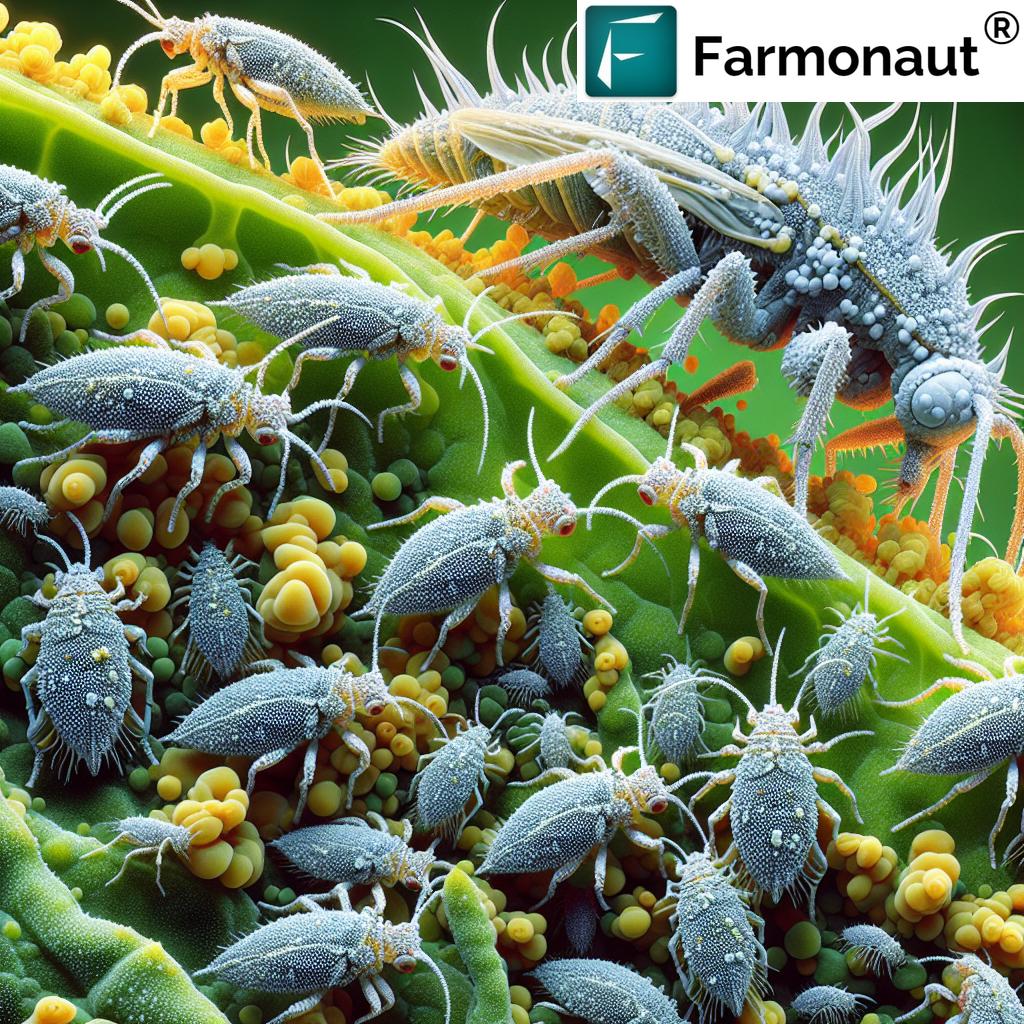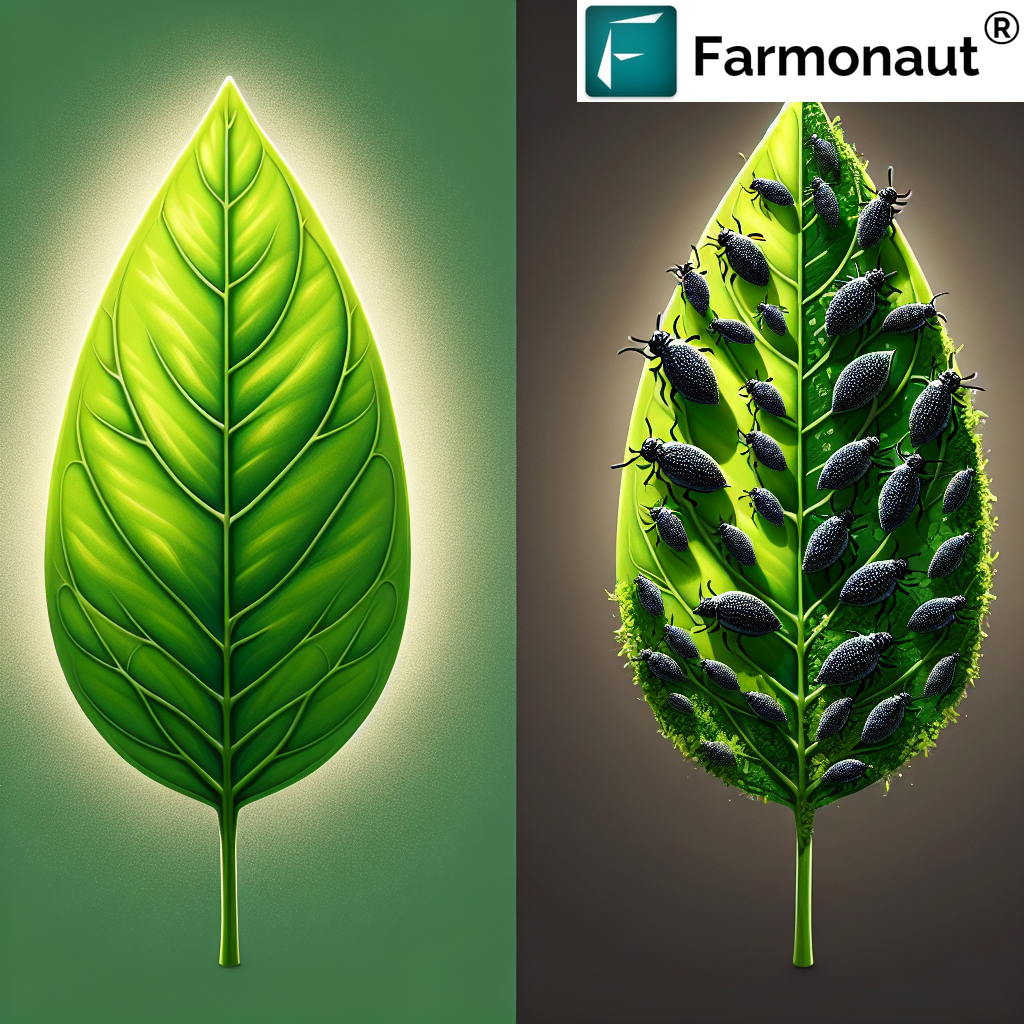Crop Irrigation: 7 Powerful Ways to Boost Sustainable Yields
Table of Contents
- Introduction
- Importance of Crop Irrigation in Agriculture and Sustainability
- Types of Irrigation Methods & Their Sustainable Role
- Comparison of Irrigation Methods for Sustainable Crop Production
- Key Challenges in Crop Irrigation and Sustainable Practices
- Crop Irrigation: 7 Powerful Ways to Boost Sustainable Yields
- Future Innovations: Smart Irrigation, Data, and Farmonaut
- Conclusion: Ensuring Food Security with Sustainable Irrigation
- Frequently Asked Questions (FAQ)
- Farmonaut Subscriptions
Introduction to Crop Irrigation and Its Growing Significance
Crop irrigation stands at the heart of agriculture, forestry, and horticulture, playing a critical role in ensuring our plants receive the adequate water needed for growth and optimal yields. As a fundamental practice, irrigation involves the artificial application of water to the soil or land—helping us assist plants in their journey from seed to harvest, maintain vibrant landscapes, and even revegetate disturbed soils. Due to rising population, shifting climate patterns, and increased food demand, the importance of irrigation in agriculture has grown dramatically.
At Farmonaut, we recognize that modern crop irrigation is about much more than watering fields—it’s about strategically managing water resources to improve farm productivity, boost environmental sustainability, and build resiliency against the unpredictable impacts of climate change.
In this in-depth guide, we’ll explore types of irrigation methods, sustainable strategies, the latest in irrigation systems, and real-world solutions for improving crop productivity. Along the way, we’ll highlight how our technology-driven insights at Farmonaut empower smarter, more efficient, and sustainable irrigation worldwide.
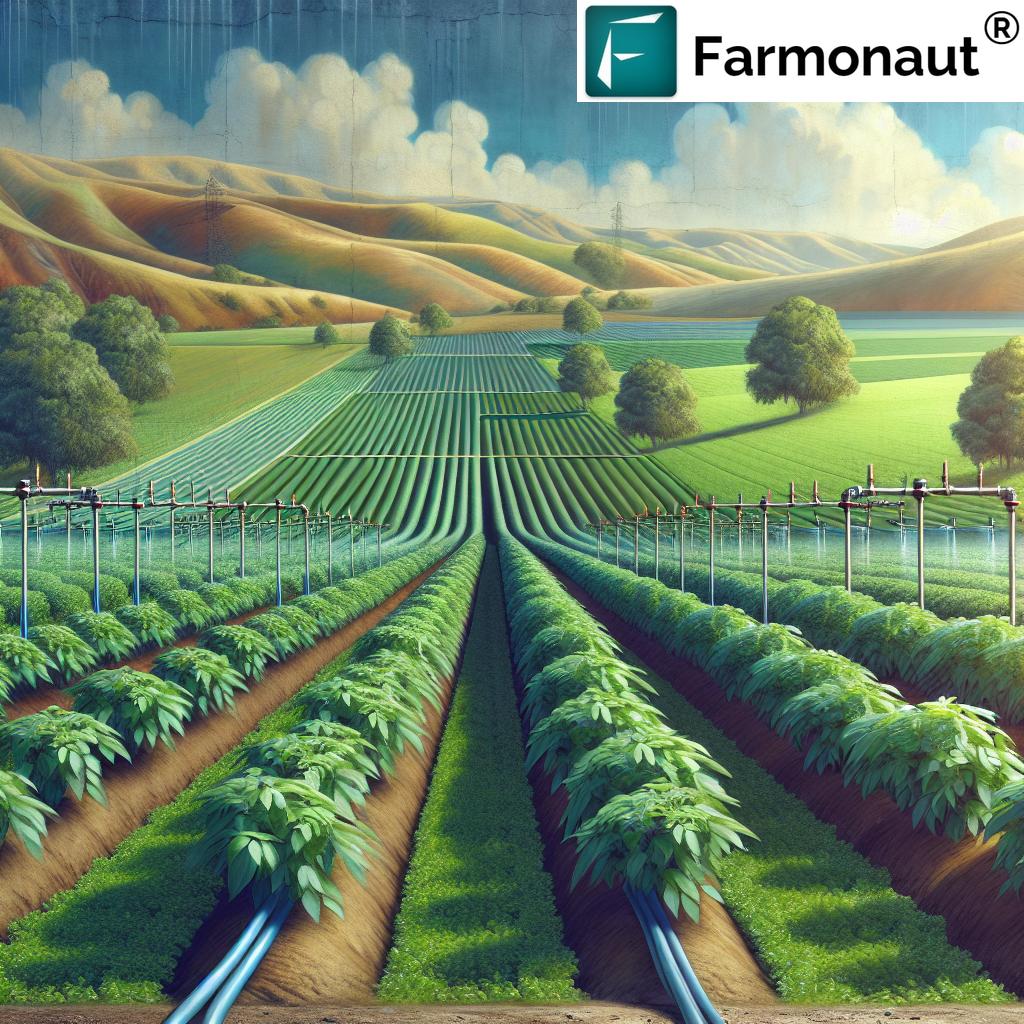
Whether you are a smallholder farmer, an agribusiness manager, or a policymaker focused on sustainable food production, the knowledge and tools shared here will help you make informed decisions for inclusive growth.
The Importance of Crop Irrigation in Agriculture and Sustainability
Let’s consider why crop irrigation is so essential—especially today. With rising population placing greater demands on food supply and climate change creating erratic rainfall patterns, irrigation is no longer about luxury; it’s a necessity for sustainable growth.
Key Benefits of Crop Irrigation
- Mitigates drought and rainfall variability: Reliable water supply allows us to establish crops and trees in arid or semi-arid regions where rainfall is limited or erratic.
- Boosts agricultural productivity and food security: Consistent irrigation enables higher yields, a broader range of cultivable crops, and stable production—even during adverse weather.
- Supports sustainable forestry and carbon sequestration: Used in tree plantations, irrigation increases biomass production and promotes carbon sequestration—crucial for combating climate change.
- Maintains healthy ecosystems: Proper water management supports plant diversity and stabilizes landscapes, especially in disturbed or overused soils.
From establishing new croplands to maintaining orchard health and revegetating disturbed soils, irrigation’s role is both tactical and strategic across food, fiber, and energy sectors.
Applications Beyond Crop Fields
- Horticulture: Ensuring flowers, turf, and specialty crops receive adequate water in nurseries and commercial gardens.
- Land Reclamation: Artificial water application is vital for revegetating disturbed soils on construction sites, mine reclamation, and degraded landscapes.
- Environmental Restoration: Crop irrigation helps maintain wetlands and support habitat for threatened species in regions where natural precipitation patterns are insufficient.
Types of Irrigation Methods & Their Sustainable Role
To maximize sustainability and production, we must choose the right irrigation method for our soil characteristics, crop type, and available resources. Let’s examine the primary methods used today—and highlight how each supports (or challenges) our goals for efficient water management.
1. Surface Irrigation
- Overview: Water flows over the surface of the soil by gravity, via methods like furrow, basin, or flood irrigation.
- Pros: Cost-effective, minimal technical infrastructure needed, well-suited for flat terrain, and easy to implement at scale.
- Cons: Can be inefficient; significant water loss through runoff and evaporation. Not optimal for water-scarce regions.
Example use: Paddy rice and sugarcane fields using traditional flooding.
2. Sprinkler Irrigation Systems
- Overview: Water is pumped through pipes and sprayed over crops—mimicking natural rainfall using rotating or fixed spray heads. Center-pivot irrigation is a notable system for large fields.
- Pros: Efficient water distribution, suitable for a wide range of soil types and terrains, and reduces labor costs.
- Cons: High initial setup costs, some water loss via spray evaporation (especially in dry, windy conditions), requires pressurized water and regular maintenance.
Example use: Cereal grains and leafy vegetables in arid regions, and large-scale farm management.
3. Drip Irrigation Systems (Trickle Irrigation)
- Overview: Water delivers directly to the root zone of plants through a network of tubes, pipes, and low-pressure emitters—minimizing evaporation and runoff.
-
Drip irrigation benefits:
- Reduces water waste and boosts water-use efficiency (up to 95%).
- Works extremely well in water-scarce and arid regions.
- Improves crop health and productivity by maintaining consistent soil moisture, reducing weed growth, and minimizing disease risk from wet leaves.
-
Cons: Higher initial installation cost, requires filtration and regular maintenance to prevent clogging, less suited for some field crops.
Fleet management solutions can help schedule and monitor drip irrigation machinery for maximum efficiency.
Example use: Vegetables, vineyards, orchards, and landscapes where water conservation is paramount.
4. Subirrigation
- Overview: Water supplied below the surface so it seeps upward to plant roots—suitable for areas with high water tables or controlled greenhouse conditions.
- Pros: Decreases evaporation loss, provides consistent soil moisture, especially valuable for horticulture and greenhouse crops.
- Cons: Installation complexity, challenging to control in open field conditions, and not adaptable for all soil types.
Example use: Potted plants, seedling trays, and greenhouse vegetables.
5. Micro-Irrigation
- Overview: A broader category including drip and micro-sprinkler systems, micro-irrigation delivers small amounts of water at low pressure, directly to the base of each plant or tree.
- Pros: Significantly reduces evaporation and runoff, ideal for row crops, orchards, and vineyards, requires less water than conventional methods.
- Cons: Susceptible to emitter clogging and requires periodic inspection; higher initial setup costs.
Example use: Fruit trees, landscape plants, nurseries, and resource-limited environments.
6. Deficit Irrigation
- Overview: A sustainable strategy where water delivers only during the most drought-sensitive growth stages, reducing total water use while maintaining most of the yield potential.
- Pros: Maximizes water productivity, reducing water waste, particularly valuable in arid and water-limited regions; fits well with climate-resilient crop selection.
- Cons: May reduce overall yield volume if not managed precisely; requires accurate knowledge of crop water requirements and stage sensitivity.
Example use: Fruit trees, grapes, and drought-tolerant crop varieties.
See how carbon footprinting on Farmonaut tracks the sustainability impact of deficit and other irrigation practices.
7. Alternative & Advanced Irrigation Systems
- Overview: Rainwater harvesting, reuse of treated wastewater, and next-gen systems using AI-powered monitoring and automation. Integration with satellite-based crop health monitoring (like Farmonaut’s) enables adaptive water scheduling based on real-time soil moisture, plant stress, and weather data.
- Pros: Dramatically reduces waste, adapts to local environmental conditions, promotes total sustainability.
- Cons: Requires upfront investment, digital literacy, and support infrastructure.
Example use: Forest plantation advisory using adaptive, satellite-informed irrigation in challenging regions.
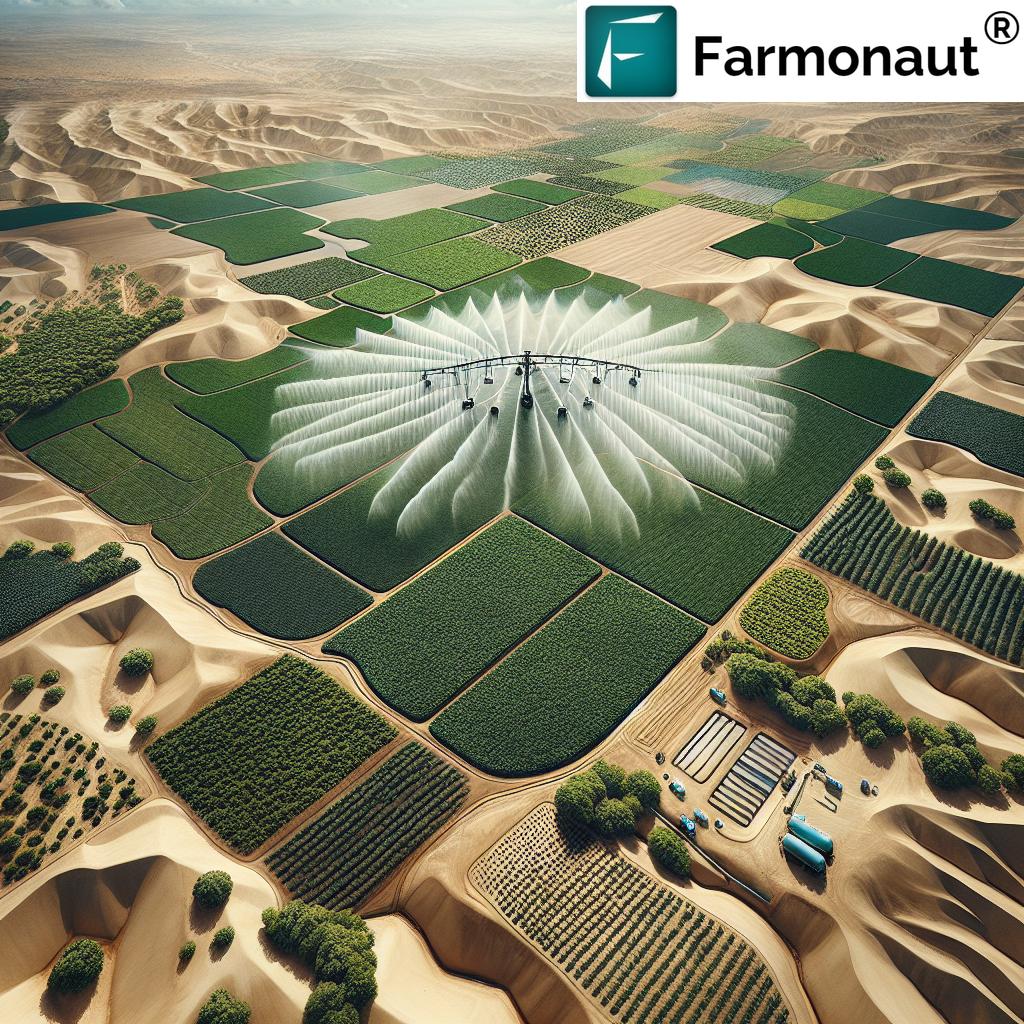
Comparison of Irrigation Methods for Sustainable Crop Production
| Irrigation Method | Estimated Water Efficiency (%) | Estimated Water Savings (%) | Suitable Crops | Initial Setup Cost (USD/ha) | Environmental Impact |
|---|---|---|---|---|---|
| Surface (Furrow, Basin, Flood) | 40-60 | 0 (Baseline) | Paddy, Sugarcane, Grains | $200-$700 | High (evaporation, runoff, salinization) |
| Sprinkler | 65-75 | 20-30 | Cereals, Vegetables, Lawns | $900-$2,200 | Medium (wind drift, energy) |
| Drip | 85-95 | 50-60 | Vegetables, Orchards, Vines | $1,200-$4,000 | Low (precise, less runoff) |
| Micro-Irrigation | 80-90 | 40-55 | Fruit Trees, Landscapes | $1,000-$3,000 | Low (targeted, minimal waste) |
| Subirrigation | 70-85 | 30-50 | Greenhouse, Nurseries | $1,500-$3,500 | Medium (possible leaching) |
| Deficit Irrigation | Varies by Management | ~40 | Drought-tolerant, Grapes | $600-$2,000 (add-ons) | Low (saves water, resilient) |
| Advanced/AI/Alternative | Up to 95+ | 50-65 | Flexible (All) | $1,500+ (technology) | Very Low (adaptive, optimized) |
Note: Estimated values vary based on region, system scale, and operational conditions.
Key Challenges in Crop Irrigation and Sustainable Practices
While the advantages of irrigation are clear, several pressing challenges must be addressed to ensure sustainable and responsible use of water resources in agriculture:
1. Water Scarcity & Overuse
- Challenge: Over-reliance on irrigation systems can deplete groundwater and surface water, leading to shortages for domestic, industrial, and environmental needs.
- Solution: We must integrate water management in agriculture, promote reuse (rainwater, treated wastewater), and use efficient systems like drip or micro-irrigation wherever possible.
2. Soil Salinization
- Challenge: Improper irrigation and poor drainage cause the build-up of salts in the root zone—crippling crop growth and soil health, especially in arid areas.
- Solution: Regular soil monitoring, proper system design, and maintenance of drainage infrastructure are critical. Data-driven insights from Farmonaut’s crop health monitoring can help track and prevent issues.
3. High Setup and Operational Costs
- Challenge: Modern irrigation systems (like drip and sprinkler) require notable initial investment. This presents barriers for smallholder and developing region farmers.
- Solution: Access to crop loan and insurance (Farmonaut’s crop loan solutions) can support farmers in financing advanced irrigation for sustainable intensification.
4. Climate Change, Variability and Adaptive Strategies
- Challenge: Changing rainfall patterns (shorter, intense storms and longer droughts) undermine predictable irrigation planning.
- Solution: Adaptive management using real-time weather data (API & developer docs here) provides actionable intelligence for timely irrigation scheduling.
5. Environmental Impact
- Challenge: Runoff from excessive/inefficient irrigation may carry fertilizers and pesticides into water bodies, resulting in eutrophication, loss of biodiversity, and degraded ecosystem health.
- Solution: Sustainable irrigation practices—data-driven and precise, with support for low-impact technologies and adoption of best management practices.
Overcoming these challenges isn’t just an engineering task—it requires informed decisions and a holistic approach to resource management, environmental sustainability, and community well-being. Advanced solutions, like those from Farmonaut, make adopting these best practices accessible and practical for all stakeholders.
Crop Irrigation: 7 Powerful Ways to Boost Sustainable Yields
Let’s bring together all the knowledge above and focus on practical, actionable strategies that empower us to overcome modern challenges. Here are seven proven ways to boost crop productivity and secure sustainability in our irrigation practices:
-
Adopt Highly Efficient Irrigation Systems
- Prioritize technology with proven water-use efficiency (like drip irrigation), especially for fruit, vegetable, and orchard crops in water-limited areas.
- Upgrade traditional surface methods to micro-irrigation systems for large and small farms alike.
-
Utilize Advanced Monitoring and Precision Agriculture Tools
- Integrate satellite-based crop health monitoring to assess soil moisture, plant stress, and adjust irrigation scheduling dynamically for optimal water use.
- Leverage real-time data and AI-driven advisory systems to customize recommendations for every field and crop.
-
Practice Deficit & Regulated Deficit Irrigation (RDI)
- Apply water only during drought-sensitive growth stages or to precise root zones to maximize water productivity while maintaining yield and quality.
-
Harvest and Recycle Water
- Capture and use rainwater for irrigation (rainwater harvesting systems), especially in monsoon or seasonal-rainfall regions.
- Use treated wastewater for non-food crops (such as forestry plantations), reducing pressure on groundwater resources.
-
Foster Soil Health with Integrated Management
- Prevent soil salinization and over-irrigation by using system sensors and crop/soil diagnostics (for example, NDVI from Farmonaut’s platform).
- Combine irrigation with sustainable nutrient and pest management for holistic productivity gains.
-
Select Climate-Resilient Crops and Adaptive Strategies
- Choose drought-tolerant or short-cycle crop varieties for regions likely to experience water scarcity or climate variability.
- Adjust cropping patterns and rotation based on real-time weather forecast data, minimizing risk and waste.
-
Empower Farmers with Data, Access, and Financial Tools
- Make precision agriculture affordable and accessible through universal mobile and web platforms like Farmonaut’s App.
- Enable funding for sustainable technology upgrades through satellite-based crop loan verification and crop insurance, making resource-efficient irrigation a reality even in developing regions.
The journey towards sustainability in crop irrigation is a collective mission. By embracing these 7 strategies—supported by technological innovation, adaptive management, and knowledge sharing—we can secure healthy yields while safeguarding our planet’s vital water and soil resources.
Future Innovations: Smart Irrigation, Climate Change, and Farmonaut’s Role
With agriculture entering a new era shaped by data, satellites, and digital transformation, the future of crop irrigation holds enormous promise. At Farmonaut, our commitment is to make precision agriculture truly accessible and affordable—empowering everyone from smallholder farmers to multinational agribusinesses with actionable insights for smarter, greener, and more resilient irrigation.
- Smart Irrigation Systems: Machine learning and satellite data combine with IoT sensors to analyze soil moisture, forecast precipitation, and automate water application with unmatched precision—significantly reducing waste and boosting yields.
- Data-Driven Decision Support: Farmonaut’s real-time advisory systems, such as Jeevn AI, help farmers understand exactly when, where, and how much to irrigate based on crop, soil, and weather conditions.
- API Integration: Our API and developer docs make it easy for agritech businesses, research organizations, and agricultural apps to integrate satellite weather, biomass, and moisture data into their platforms—fueling smarter irrigation management at every scale.
- Blockchain Product Traceability: Ensuring transparency along the food supply chain using solutions such as Farmonaut’s blockchain-based traceability, tracing every stage from field to fork for responsible irrigation and product authentication.
- Environmental Impact Tracking: Carbon footprinting tools allow growers and agri-businesses to monitor and reduce their environmental impact, aligning irrigation and land use with climate change mitigation goals.
By continuing to invest in research, real-time monitoring, and smart resource management platforms like Farmonaut, we can transform irrigation from a basic necessity into a powerful lever for global food security, rural prosperity, and environmental regeneration.
Conclusion: Ensuring Food Security & Environmental Stewardship with Sustainable Crop Irrigation
In a world where population growth and climate change continuously reshape the landscape of agriculture, crop irrigation remains our best defense—and our greatest opportunity—for improving crop productivity sustainably. By adopting efficient irrigation systems, embracing innovative technologies, and putting sustainable irrigation practices at the core of our strategies, we collectively ensure:
- Reliable food supply and resilient rural livelihoods, even in regions challenged by water scarcity.
- Environmental protection through responsible water use, minimized runoff, and restored soil health.
- Economic stability and inclusive growth across the agricultural supply chain.
Farmonaut stands proud as an enabler—providing universal access to affordable, real-time crop management, and turning every farm, forest, and landscape into a beacon of sustainability. The path forward is built on knowledge, adaptation, and collective action. Together, let’s irrigate not just our fields—but our future.
Frequently Asked Questions (FAQ)
Farmonaut Subscription Plans
Precision agriculture is within your reach. Choose a Farmonaut subscription that suits your needs—whether you’re a smallholder farmer, agribusiness, or institution—unlocking the power of real-time crop health, AI advisory, and sustainable farm management.





